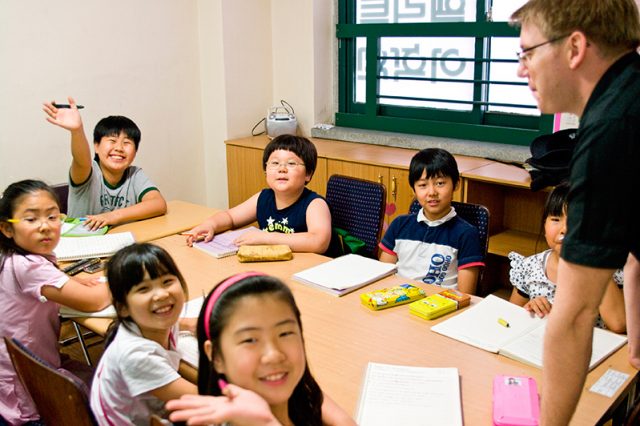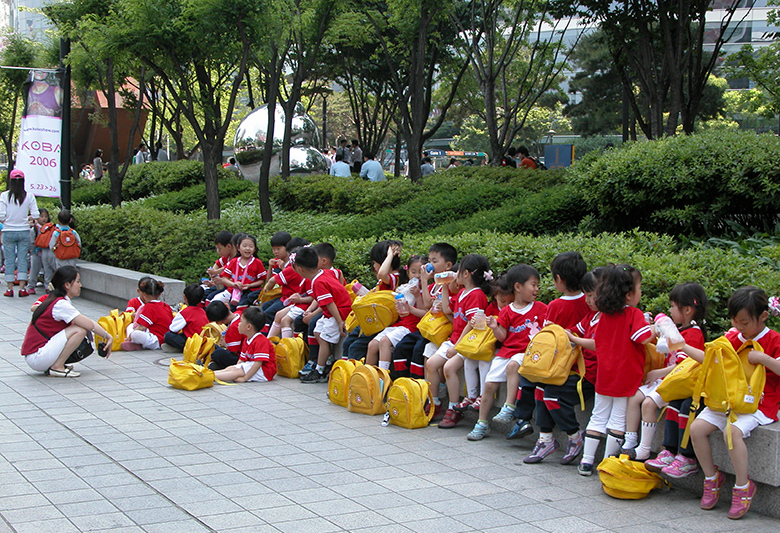
Any school student in South Korea has to study hard and be able to withstand with the intensive education system that is aimed to emphasize academic skills. Students in South Korea have long school hours and most of them spend additional school time in Hagwons, Japanese private after school learning programs.
In South Korea, compulsory education begins when a child turns 5 and lasts until a child turns 18. Elementary schools are free but if a child needs pre-schooling, there are private and international schools with relatively high tuition fees.
School Year
Though state schools in South Korea have to follow similar school calendar, you can notice some slight variations in holiday’s dates between individual schools and provinces. The academic year starts in March and ends in February. The academic year is divided into two semesters with holidays from mid-July to the end of August and from mid-February to the beginning of March. Also, there are two additional two-week long breaks within semesters but the exact dates vary from school to school.
There are two more school holidays: the Lunar New Year that lasts for three days between January and February and the Chuseok Korean Thanksgiving that also lasts for three days starting from the 15th day of the 8th month of the lunar calendar year.
Pre-Primary Schools
Though pre-primary education usually starts when a child turns 3, there are private nursery schools, day care schools and English nursery schools that welcome children from the age of 2. Though the compulsory education in South Korea starts from the age of 5, it is possible that soon it will be compulsory for children from the age of 3.
Nu Ri Gua Jung, the compulsory pre-primary education program, welcomes children from the age of five. The program is aimed to prepare children for primary school.
There are Nursery schools that welcome children from the age of two. The enrolment in public nursery schools is very competitive as such schools are run by the government that requires high standards and offers cheaper fees.
Parents who want to focus on early English education can choose for their children English-speaking nursery schools known in South Korea as Yeong Eau Yoo Chi Won. Though fees in such schools are usually higher, English nursery schools mainly engage native English-speaking teachers.
Private educational play schools, known in South Korea as Nol E Hak Gyo, use European and international education methods that promote child’s learning through play and experience.

Primary School
A primary school in South Korea starts at the age of 6 and consists of six grades. The curriculum includes studying such subjects as foreign language, maths, arts, physical education and some other. In the most cases, children attend schools in those districts where their parents are registered. If a child goes to private school, it is important for parents to inform a local district office, so the government school will not have to keep a place.
It is worth to mention that there are about 1000 primary schools with that provide children from families with lower incomes and working parents with before-school care and after-school care that works from 06:30 AM to 22:00 PM.
Middle School
Middle school starts when a child turns 12 and lasts for three years. Middle schools in South Korea, as well as high schools, are very intensive. In general, a middle school student spends about 10 hours per day at school. Nevertheless, children can pass from one grade to the next regardless of exam results. However, if a student wants to pass to high school, it is important to have good exam results in the final year. That is why nearly all South Korean middle school students attend Hagwons. It means that an average middle school student in South Korea spends about 12 hours a day studying.
In South Korea, middle school is known as Joong Hak Gyo. Middle school is free, except private middle schools. The curriculum includes both compulsory and elective subjects. Elective subjects are chosen by a student and are based on student’s abilities and preferences. Except for private schools, middle school is free.
High School
School system in South Korea includes attending a high school known as Go Deung Hak Gyo. It consists of three grades and is not free, except for children from families with lower incomes. As an average high school student in South Korea spends about 16-hours per day at school and Hagwon, tuition includes meals (including dinner). To enter a high school, students have to show great results in middle school, as the admission is based on its academic records.
There are many high school options in South Korea, including general schools, industrial schools, foreign language schools, art and music schools and science and technology schools.
General schools accept students by residential address, while the admission in industrial schools is based on choice. Foreign language schools, art and music schools, science and technology schools also admit students by choice and prepare them for university entrance exams.
